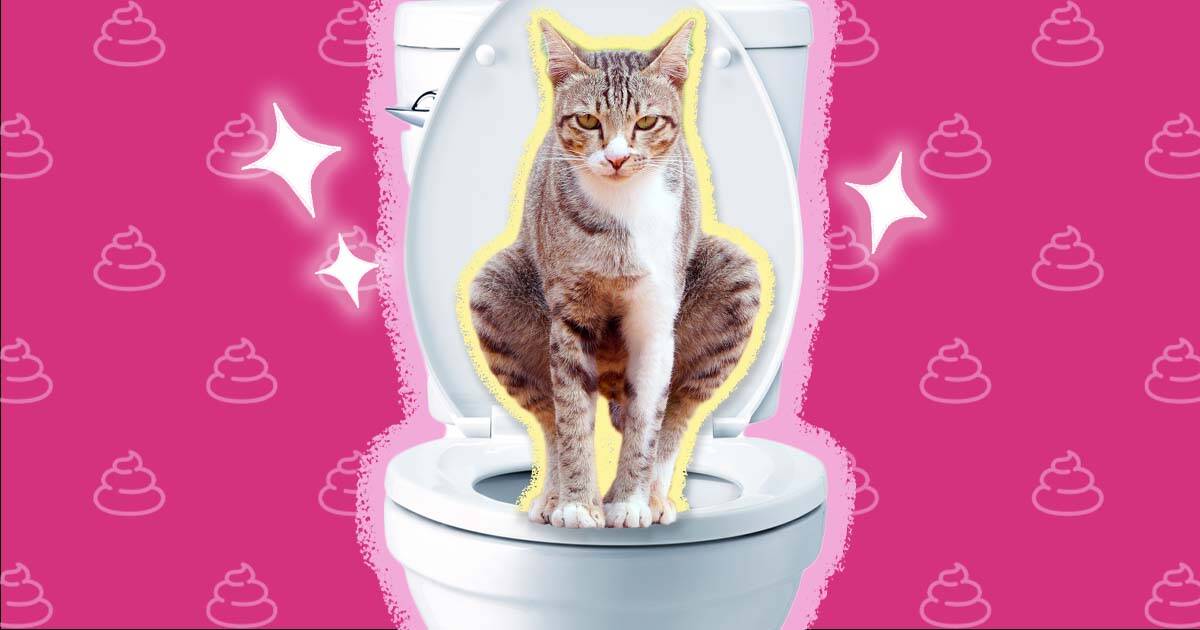Prevent Clogs and Damage: Don't Flush Cat Poop Down Your Toilet - Expert Recommendations
Prevent Clogs and Damage: Don't Flush Cat Poop Down Your Toilet - Expert Recommendations
Blog Article
Here down the page you can find a good deal of very good help and advice involving Don’t flush cat feces down the toilet.

Introduction
As cat owners, it's essential to bear in mind how we take care of our feline good friends' waste. While it may seem hassle-free to flush pet cat poop down the toilet, this practice can have detrimental effects for both the setting and human health and wellness.
Ecological Impact
Flushing cat poop introduces harmful microorganisms and bloodsuckers right into the supply of water, posing a significant danger to marine communities. These contaminants can adversely influence aquatic life and concession water quality.
Health and wellness Risks
In addition to environmental worries, flushing feline waste can also present health and wellness threats to humans. Pet cat feces may have Toxoplasma gondii, a bloodsucker that can cause toxoplasmosis-- a potentially extreme disease, particularly for expecting women and people with weakened body immune systems.
Alternatives to Flushing
Fortunately, there are more secure and a lot more liable methods to get rid of pet cat poop. Think about the adhering to alternatives:
1. Scoop and Dispose in Trash
The most typical technique of taking care of pet cat poop is to scoop it right into an eco-friendly bag and throw it in the garbage. Be sure to use a devoted trash inside story and get rid of the waste without delay.
2. Usage Biodegradable Litter
Choose naturally degradable feline trash made from products such as corn or wheat. These litters are environmentally friendly and can be securely disposed of in the trash.
3. Bury in the Yard
If you have a yard, take into consideration hiding feline waste in a marked area far from veggie yards and water sources. Make certain to dig deep sufficient to avoid contamination of groundwater.
4. Mount a Pet Waste Disposal System
Invest in a pet garbage disposal system particularly made for cat waste. These systems make use of enzymes to break down the waste, reducing odor and ecological effect.
Conclusion
Responsible family pet possession prolongs past offering food and sanctuary-- it also entails correct waste administration. By refraining from flushing cat poop down the bathroom and opting for alternate disposal methods, we can reduce our environmental footprint and secure human wellness.
Why You Should NEVER Flush Cat Poop (and/or Litter) Down Your Toilet
The Problem with Litter
The main function of litter is to solidify and adhere to your cat’s waste. While this makes litter excellent for collecting cat poop and urine, it’s also the exact property that makes it a nightmare when flushed down the toilet.
Cat litter can and will clog pipes. There is non-clumping litter, but it’s still quite heavy and can build up in pipes. This is true even of supposed “flushable litter.”
The problems only compound when the litter is already clumped into cat waste. Toilet paper is among the more flushable things, and even too much of that will clog a toilet.
The Problem with Cat Poop
Sewers and septic systems are designed with human waste in mind. The microbes that help break down human waste don’t work on cat waste. Additionally, cat poop plays host to the parasite Toxoplasma gondii.
When flushed, this parasite can enter the environment in places it was never meant to, posing a risk to pregnant women, their unborn children, and other people with compromised immune systems. While it might not seem possible, flushing cat poop can indeed introduce this parasite to the public water supply.
These reasons are why, even if you’ve trained your cat to go on the toilet and flush, which is possible, it’s still not a good idea. Also, pregnant women and the immunocompromised shouldn’t change litter, either.
How to Handle Litter
The best way to handle litter is to simply put it in a plastic bag and place it in the trash. Avoiding environmental risks and possible plumbing damage is worth the extra effort.
You can also invest in devices that seal away your cat’s waste in a separate compartment, so you don’t have to change the litter nearly as often. They’re also safer for pet owners because they limit the possibility of Toxoplasma gondii exposure.
Disposing of litter the old-fashioned way will ensure you won’t have to worry about any issues that flushing the waste can potentially cause.
Take Care of Clogged Pipes with Stephens Plumbing, Heating & Air Conditioning
The reasons you should never flush cat poop down your toilet are numerous, but sometimes the inevitable happens despite your best efforts.
Stephens Plumbing, Heating & Air Conditioning is ready to help if you’re experiencing litter-blocked plumbing. Whether you need us in an emergency or want to schedule regular maintenance, we’re here for you.
https://www.stephensplumbing.net/bathroom-plumbing/never-flush-cat-poop-down-your-toilet/

We had been made aware of that report on Don’t flush cat feces down the toilet from an associate on a different site. Enjoyed reading our review? Please share it. Let other people discover it. Thanks for your time. Come back soon.
Contact Us Now Report this page